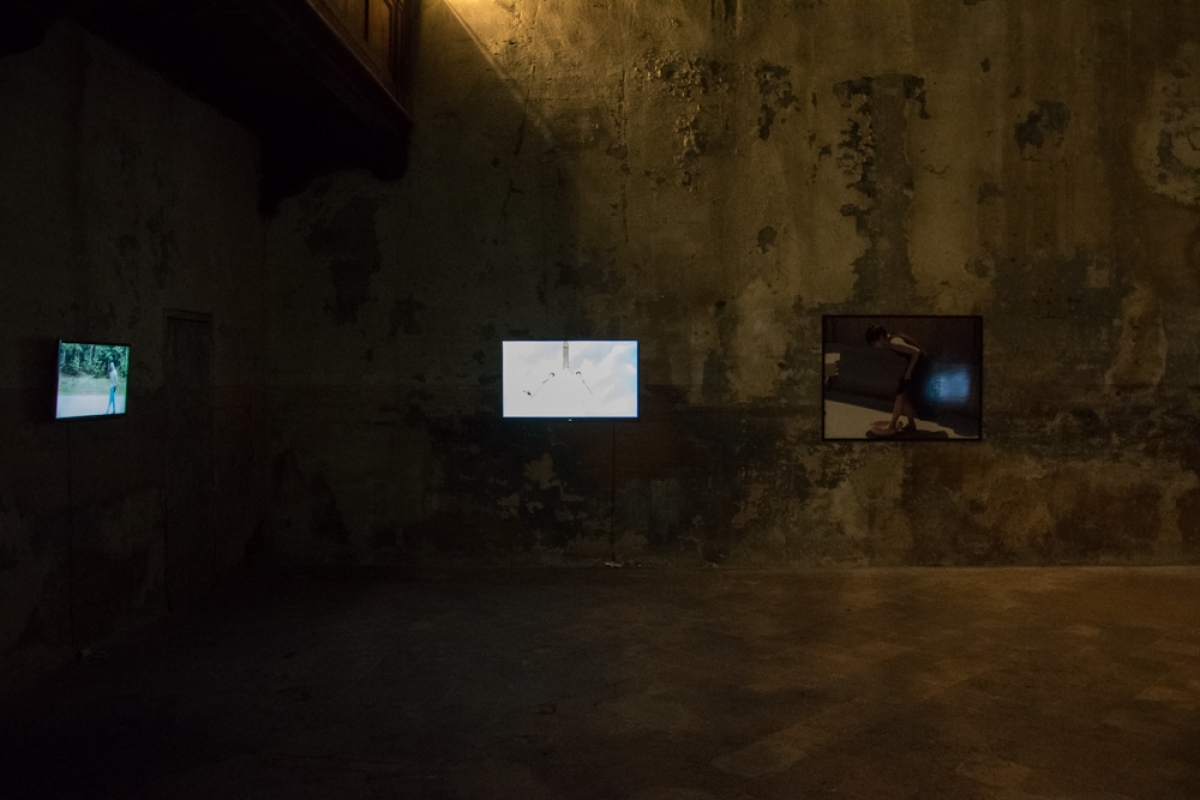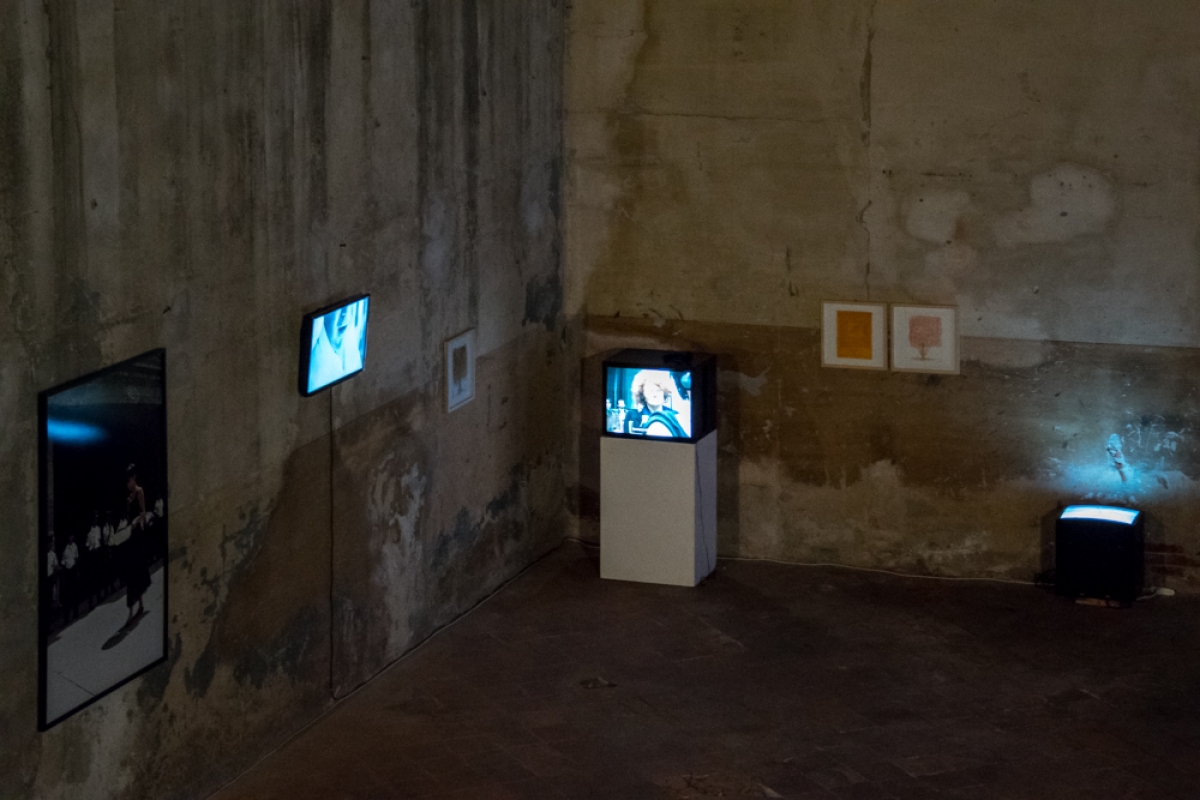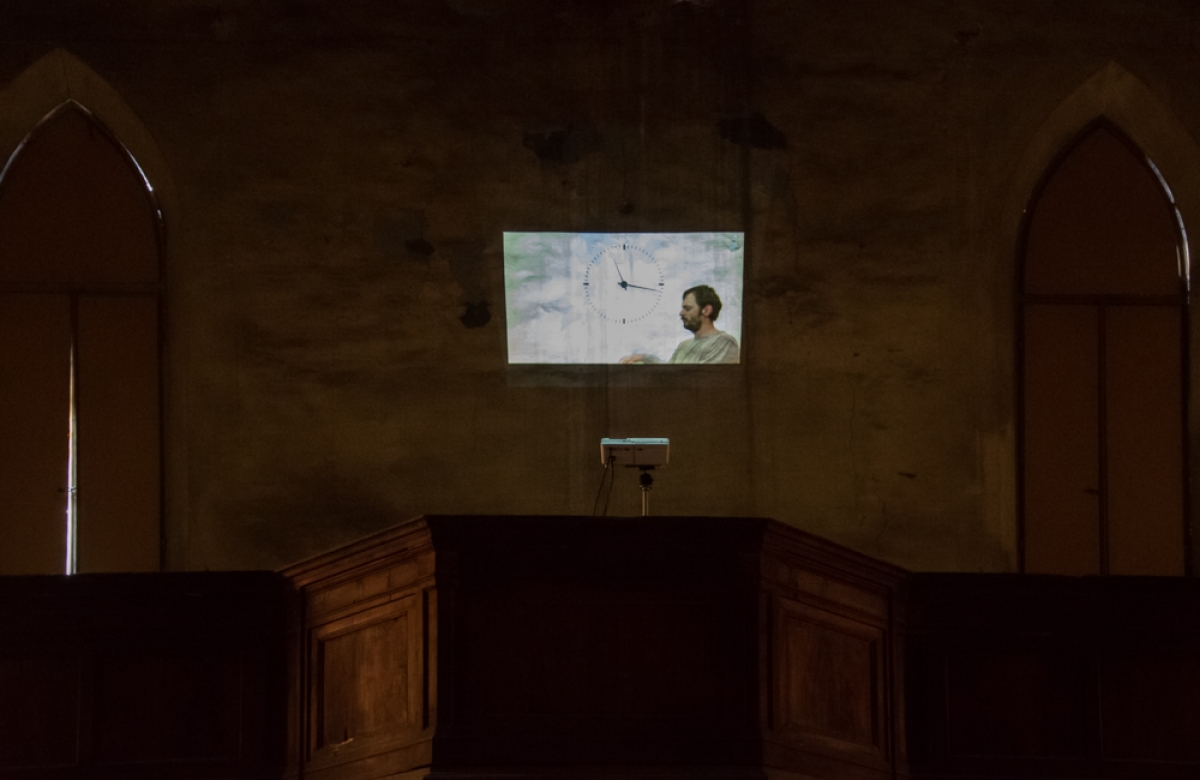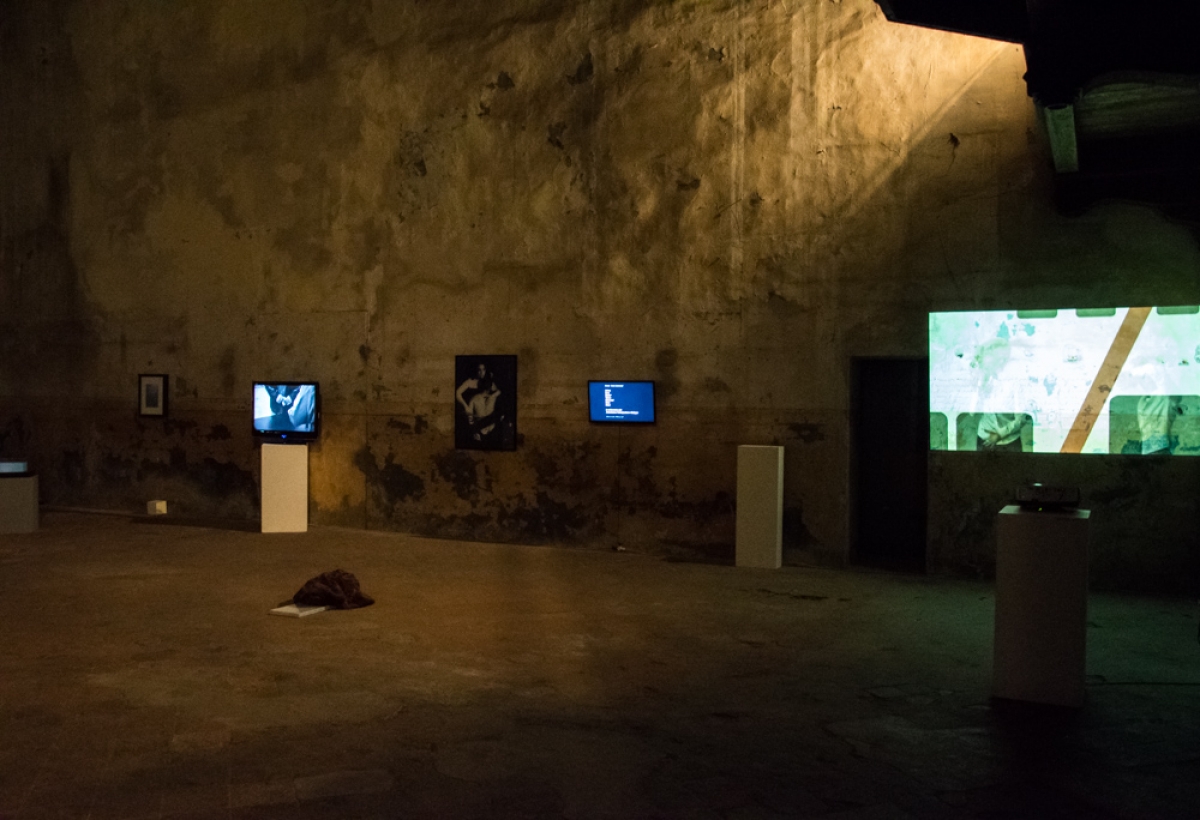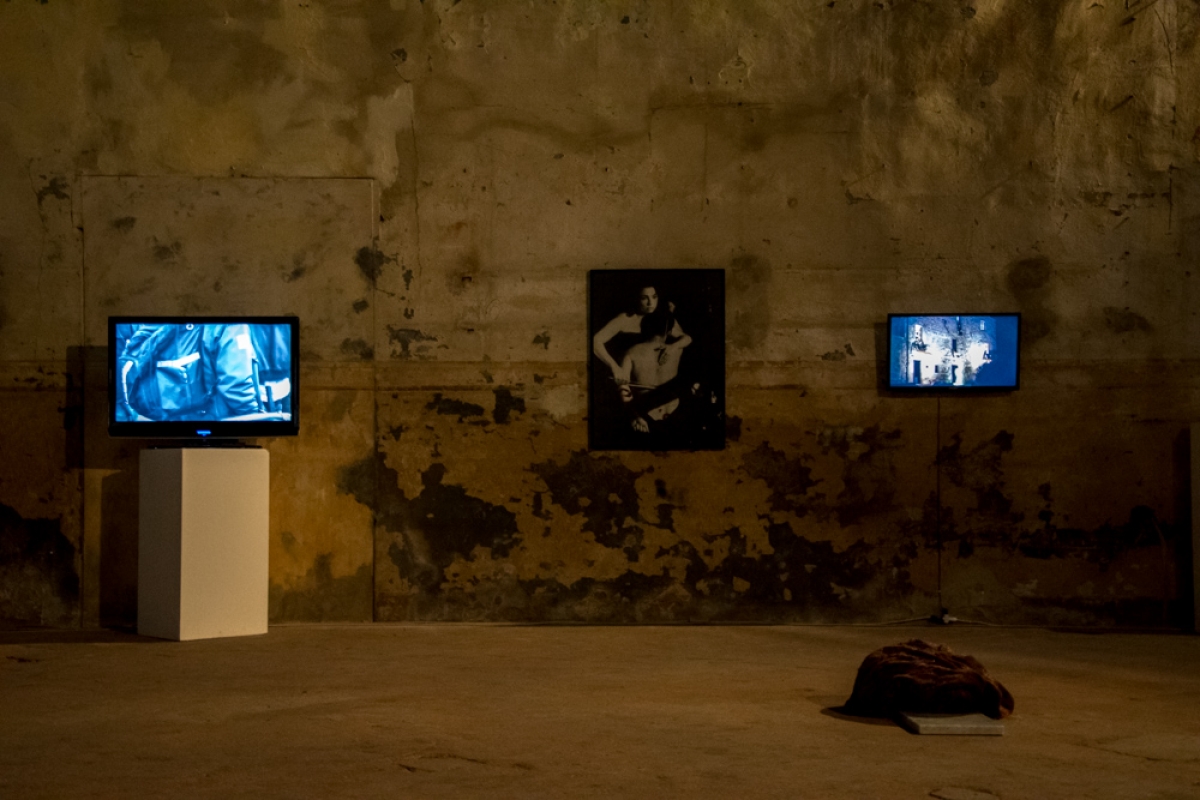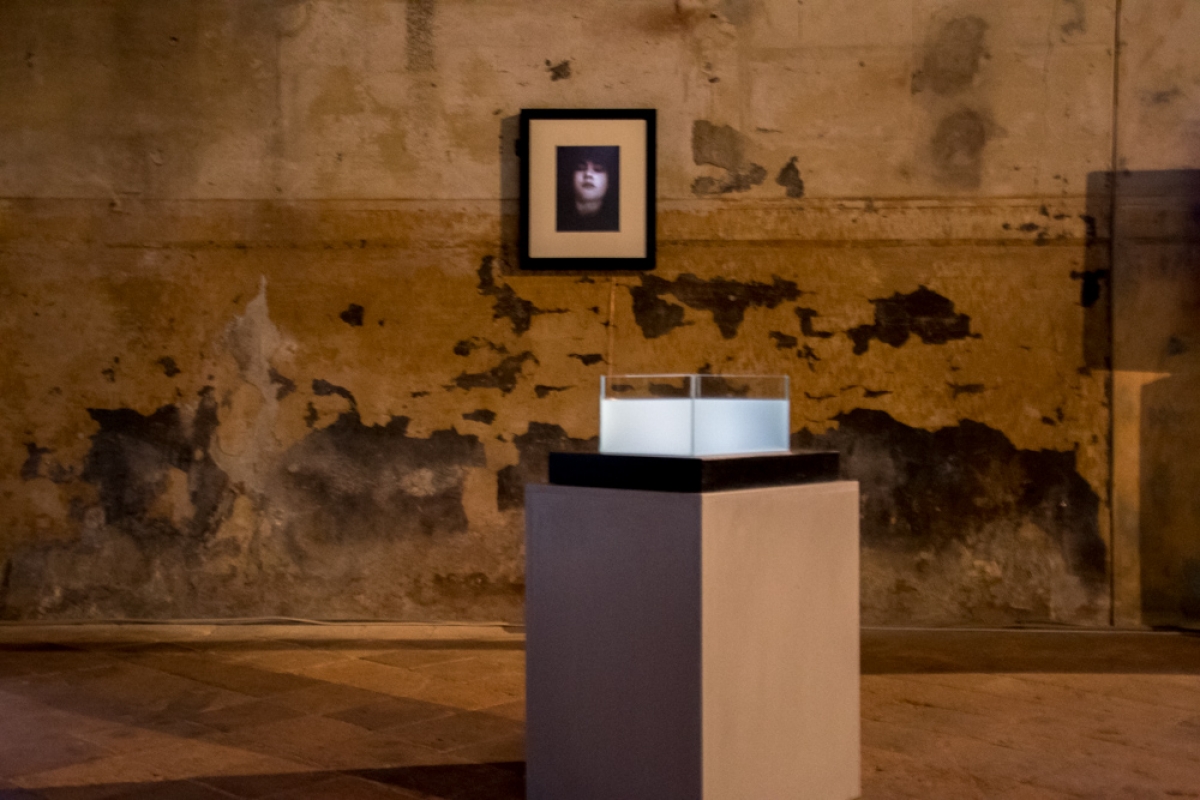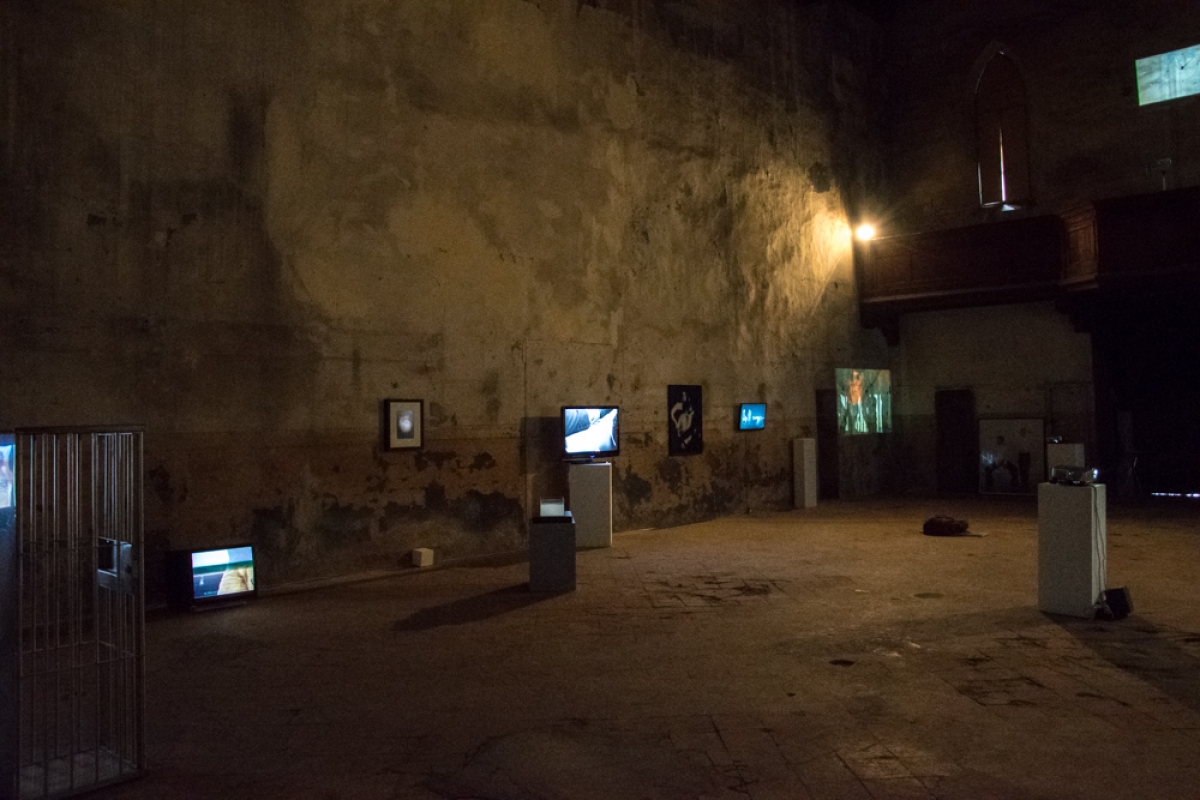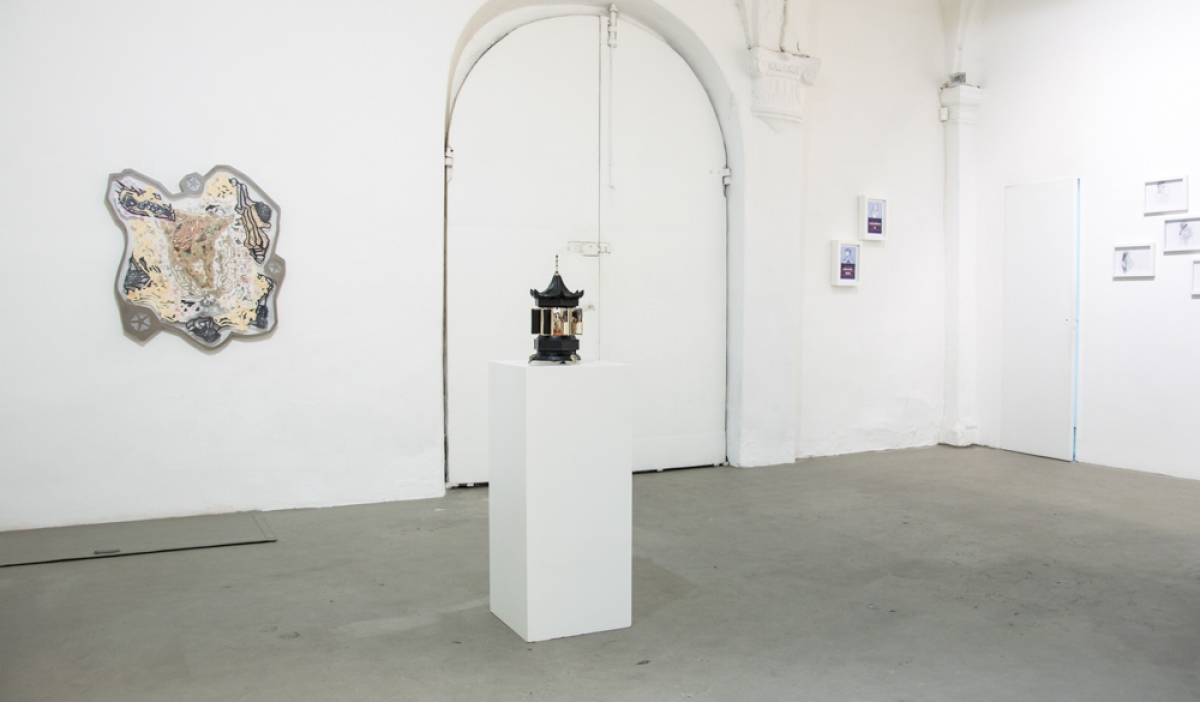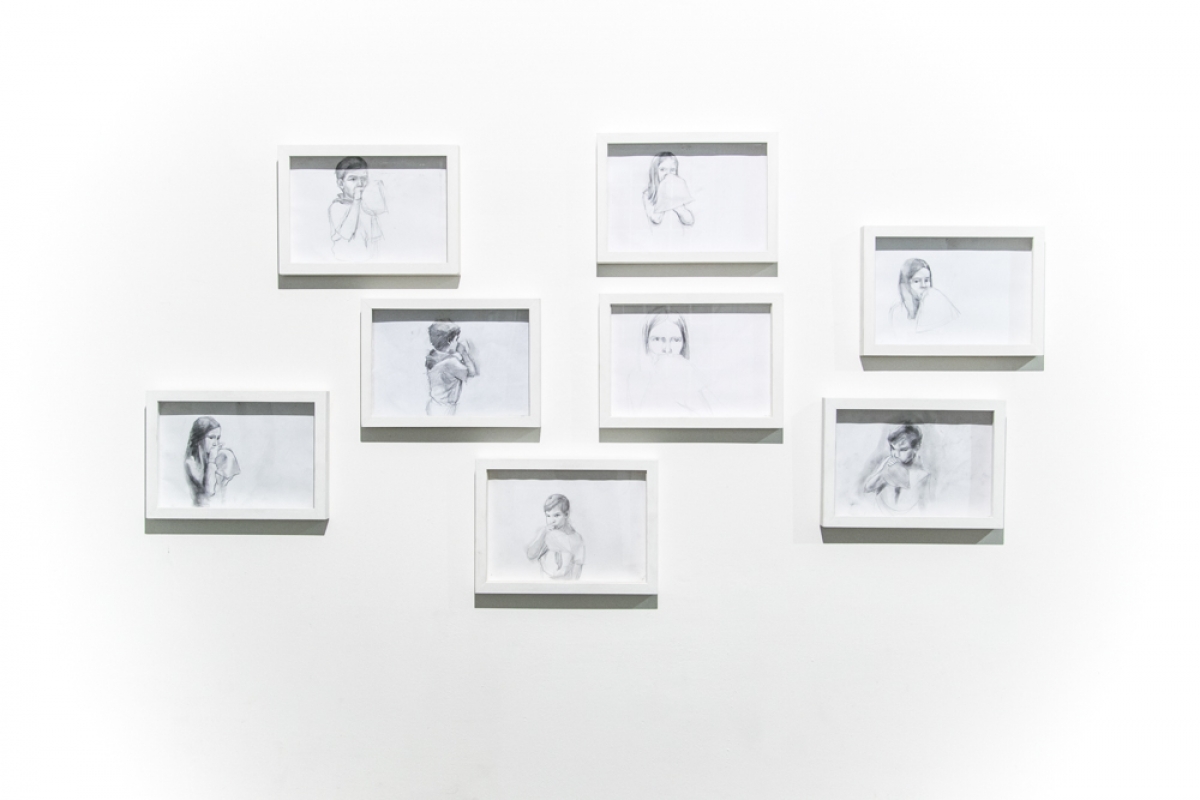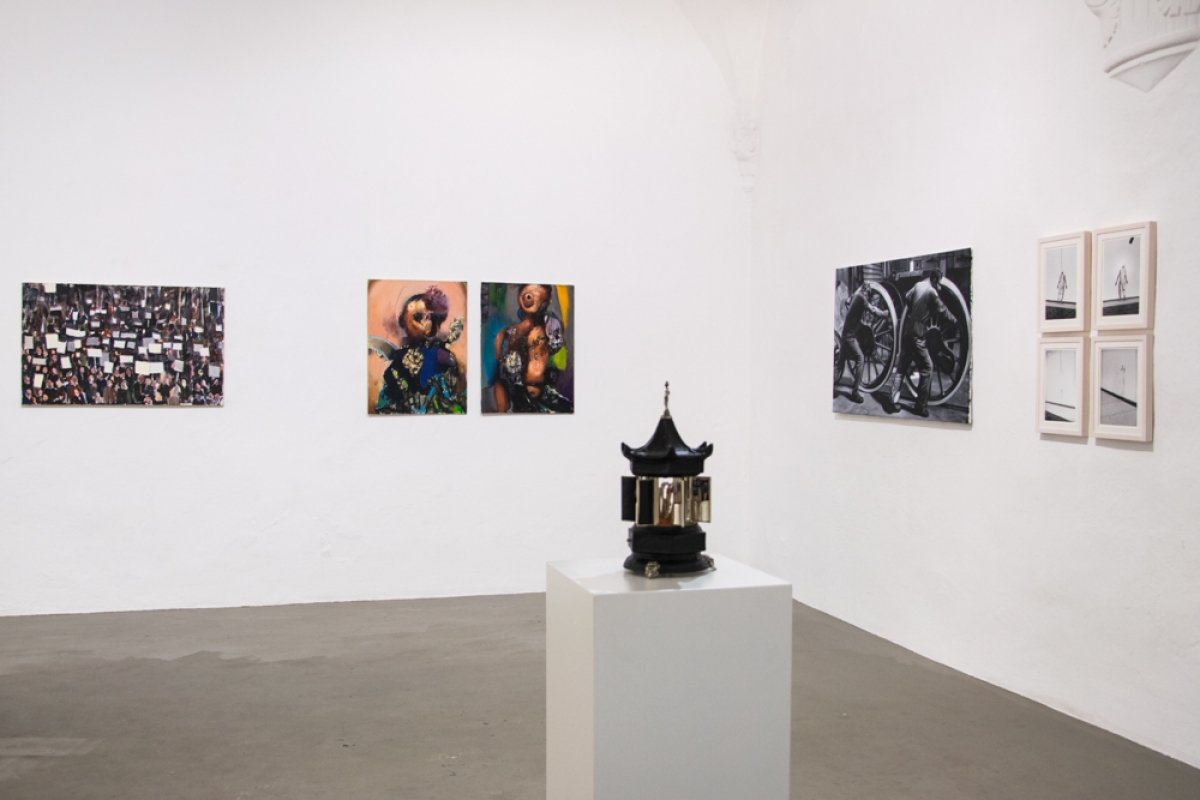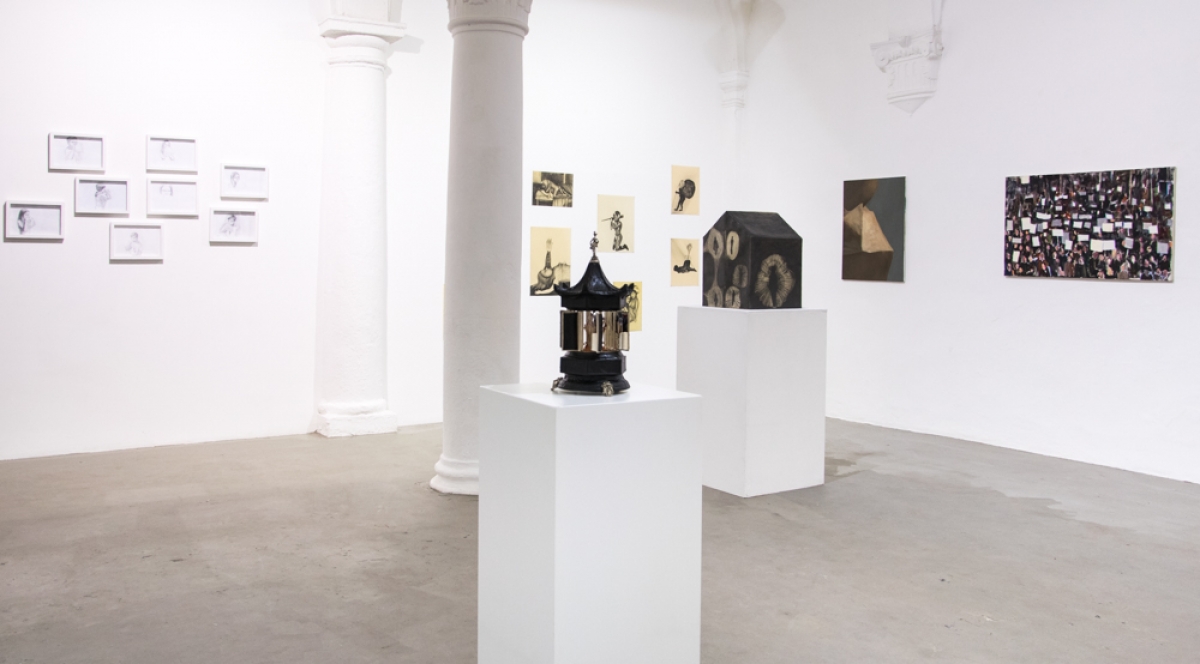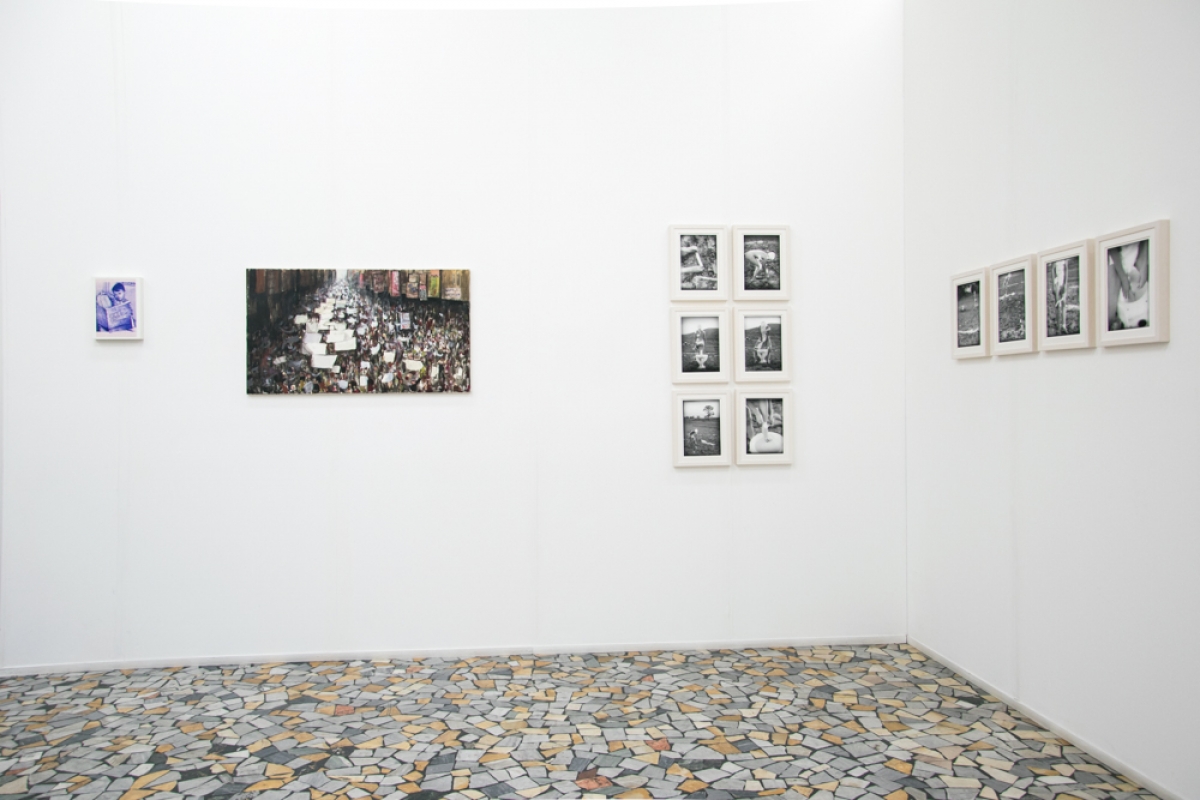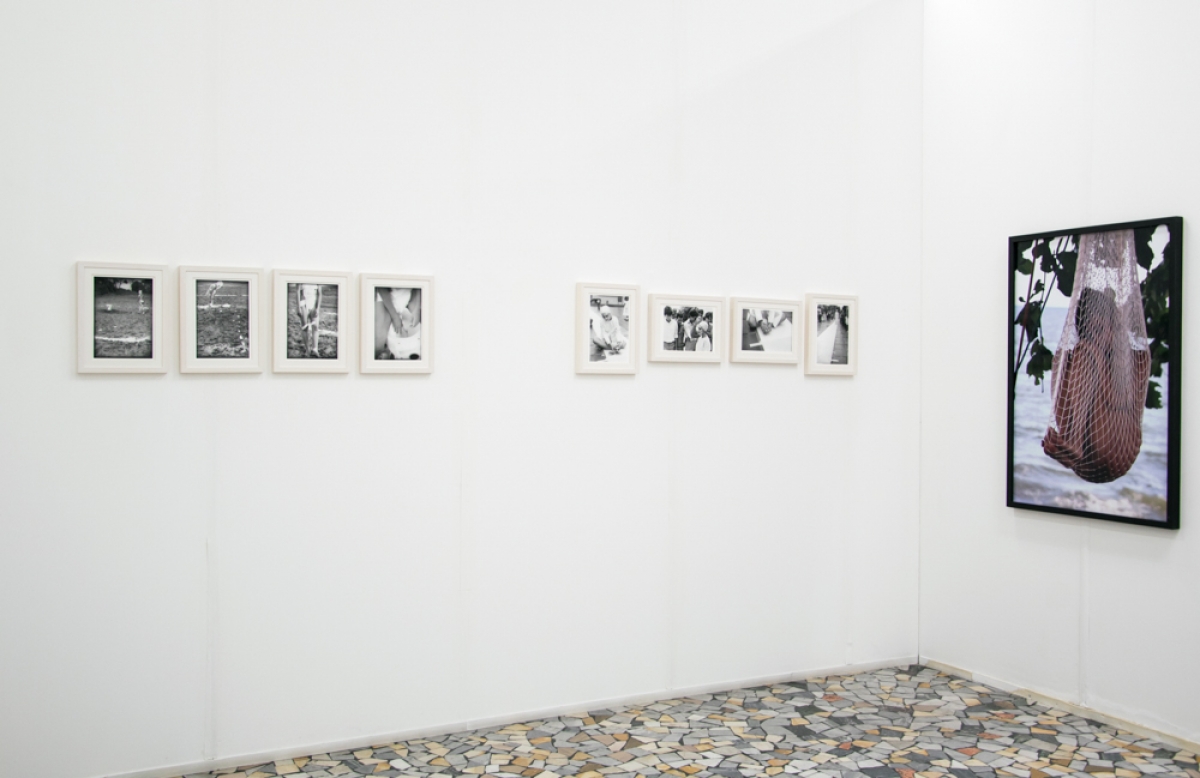I cookie ci aiutano a fornire i nostri servizi. Utilizzando tali servizi, accetti l'utilizzo dei cookie da parte nostra.
WATCH THE LINE WHILE CROSSING
a cura di / curated by Alessandro Romanini
Saturday, September 9 at 7pm
September 10 - 30, 2017
San Matthew Church
Piazza San Matteo 3
55100 Lucca
Maria José Arjona, Giuseppe Buzzotta, Gabriella Ciancimino, Fabrizio Cotognini, DEMOCRACIA, Luca Gaddini, Regina José Galindo, Dženan Hadžihasanović, Hiwa K, Aníbal López (A1-53167), Marcantonio Lunardi, Edson Luli, María Evelia Marmolejo, Ivan Moudov, Francesca Montinaro, Ruben Montini, Giovanni Morbin, Ciprian Mureşan, Nam June Paik, Michelangelo Pistoletto, Mario Santizo, Giuseppe Stampone, Santiago Sierra, Veres Szabolcs, Stefanos Tsivopoulos, Sandra Vásquez de la Horra, Driant Zeneli, Mary Zygouri, Dragan Zoli.
The action of overstepping a limit – be it tangible or intangible – portrayed in its own procedure and above all, observed, recorded and represented serves as the metaphorical subject of the exhibition held at the Church of San Matteo, Lucca, from 10 to 30 September, and promoted by Prometeogallery by Ida Pisani.
The initiative is inspired by the recent exhibition “The suspended step. Explorations about limits”, which took place from June 23 to September 3 at the Fondazione Ragghianti, with works also on the town walls and in numerous sites of the historical center of Lucca.
A unit of international artists reflects on the idea of “limit”, as well as on the related concept of “boundary”, in their historical, physical, philosophical, ethical and artistic variations, and above all the on the conventional nature of the representation and on the effects produced by mass media on image production.
Among them, Regina José Galindo, Mary Zygouri, Hiwa K, Stefanos Tsivopoulos, who currently have a prominent role in the prestigious international event Documenta 14 (Aníbal López (A1-53167), who took part to the previous edition in 2012) and Athens.
But there are other important figures, such as Spanish Santiago Sierra – fresh from an anthological exhibition at Milan’s PAC – and the Madrid collective Democracia, Colombian Maria José Arjona and María Evelia Marmolejo resident in New York and participating at the important exhibition “Radical Women: Latin American Art, 1960–1985” at Hammer Museum, Rumanian Ciprian Mureşan, Albanian Edson Luli and Driant Zeneli, Italian artists such as Gabriella Ciancimino, Luca Gaddini, Fabrizio Cotognini and many more.
In particular, these artists reflect on the many ways of recording and representing events, the “controlled” reality, reworked in its many aspects, through the pervading technology of mass communication.
A consideration about the process of increasing assimilation, carried out by technology, which becomes an alternative to reality, severing the dialectics between reality and representation, and turning the creation into a tout court vision.
Various expressive forms and various directors, from cinéma verité to poetical report, painting, photography but most of all videos that, handled by the artists on display, show their harmony with the existence, shedding some light on the mechanics that rule the sense’s production, thus forcing a consideration about both the production of images and the artist’s role in contemporary society.
The displayed works are grouped according to a “peripheral” vision, aimed at giving back the complexity of reality and its related subjectivity of perception, as opposed to the simplification, the spectacularization of pain and univocity of a point of view imposed by the media.
From Santiago Sierra’s reflection on the manipulation of symbols for political purposes and the widespread economic dominance, to the one on “liquid” parameters of today’s identity by Edson Luli, Luca Gaddini and Aníbal López (A1-53167), up to the experiments on limits between reality and utopia by Albanian artist Driant Zeneli.
There is a large number of works that bestow on the body the role of expressive instrument, making it a place for a conflict on the basis of the Body Art experience and the historical performance, as proved by the works of Regina José Galindo, Maria José Arjona, the collective Democracia and Ivan Moudov, and among them can also be listed Moon Calendar by kurdish artist Hiwa K. Gabriella Ciancimino works on the socio-cultural conventions related to maps, and so does Fabrizio Cotognini, whereas Sandra Vásquez de la Horra’s drawings shatter the rationality standards in order to shape what was collectively repressed and the anti-functionalities, now a taboo in our society.
An art that is once again political in the full sense of the word, as it unhinges the status quo and aims at encouraging a critical eye, as well as transforming the expressive and communicative language of this media-obsessed, always connected society.


